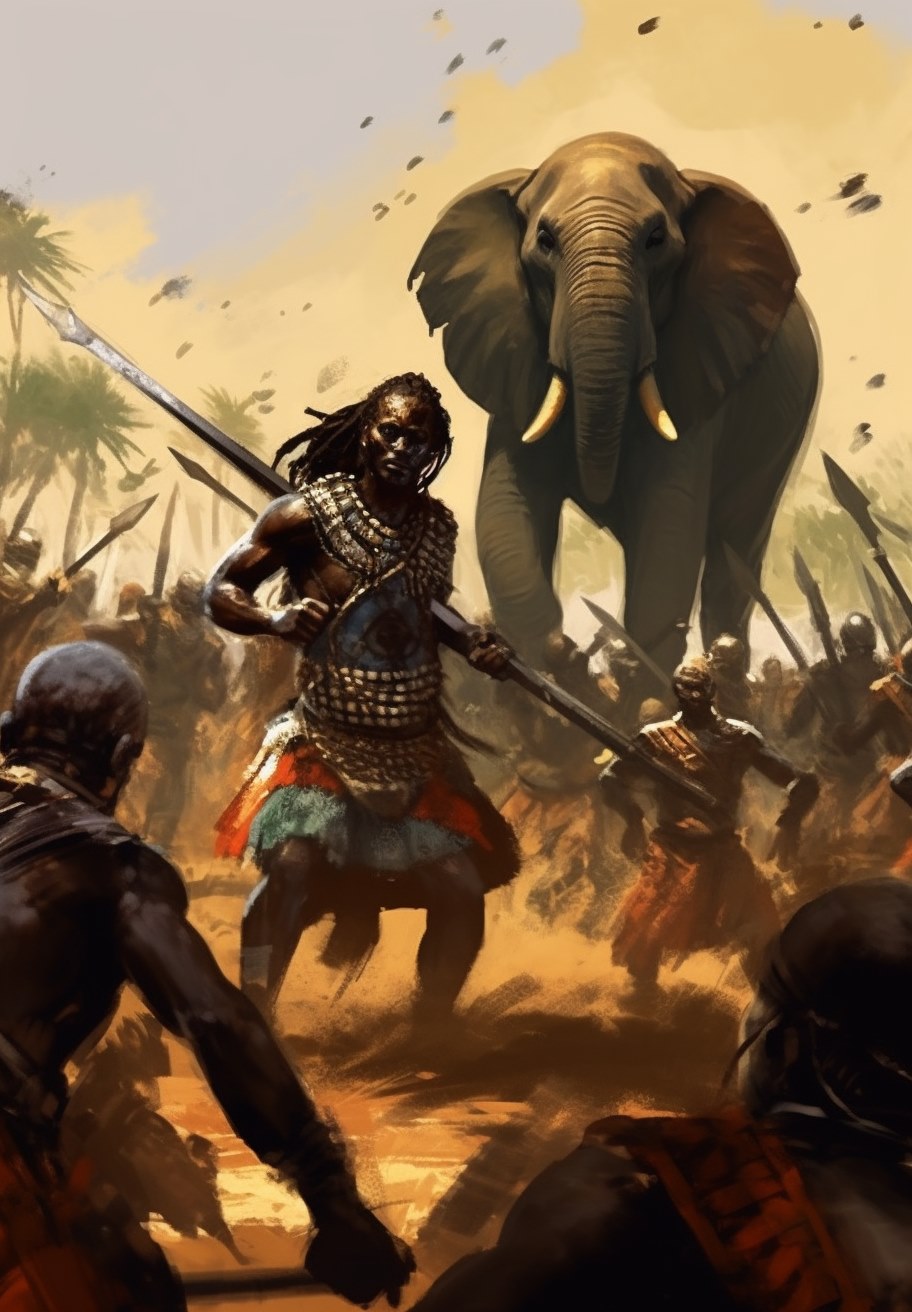 Soshangane kaZikode, a name that resonates with power and leadership in Southern Africa's history, was the founder of the Gaza Empire, one of the largest empires in Southern Africa during the 19th century. His rule saw the formation of the Shangaan people, a group whose identity fused the Nguni and Tsonga cultures and whose influence still prevails in parts of South Africa and Mozambique today.
Soshangane kaZikode, a name that resonates with power and leadership in Southern Africa's history, was the founder of the Gaza Empire, one of the largest empires in Southern Africa during the 19th century. His rule saw the formation of the Shangaan people, a group whose identity fused the Nguni and Tsonga cultures and whose influence still prevails in parts of South Africa and Mozambique today.
Soshangane's Early Life and the Ndwandwe-Zulu Conflict
Born into the Nxumalo clan, part of the larger Ndwandwe nation in what is now modern-day Swaziland, Soshangane emerged from the tumultuous period known as the Mfecane or Difaqane ("the crushing"), a time of widespread chaos and warfare among indigenous ethnic communities in southern Africa during the early 19th century.
The Nxumalo clan, under Soshangane's leadership, was one of the key actors in the conflict between the Ndwandwe and the emerging Zulu kingdom under Shaka Zulu. However, after a devastating defeat by Shaka around 1819, Soshangane led his people northwards, away from the Zulu sphere of influence.
Formation of the Gaza Empire
Soshangane's northward migration took him and his followers through Mozambique, clashing and blending with the local Tsonga people. Soshangane proved himself as a powerful leader, using diplomacy and force to incorporate the Tsonga into his growing kingdom.
The Nxumalo, under Soshangane, established their capital at Chaimite and created a new identity known as the Shangaan, reflecting the blending of Nguni and Tsonga traditions. This emerging polity, later known as the Gaza Empire, stretched from the Limpopo River in the south to the Zambezi River in the north, and from the Indian Ocean in the east to the highlands of Zimbabwe in the west.
Interactions with the Portuguese
Under Soshangane's rule, encounters between the Portuguese and the Shangaan were marked by a balance of power. The Portuguese, who had established trading posts along the Mozambican coast since the 16th century, were the first European power to engage with the Gaza Empire. However, they were not able to exert significant control over the interior of Mozambique due to the strength of Soshangane's rule.
Instead, the Portuguese entered into a tributary relationship with the Shangaan. They recognized Soshangane's authority and paid him tribute, in return for trade access and a degree of protection for their coastal settlements. This arrangement served the interests of both parties, allowing the Shangaan to profit from the trade in goods like ivory and gold, while the Portuguese maintained a foothold in the region without the need for a large-scale military commitment.
As the 19th century progressed, the power dynamics began to shift. After Soshangane's death in 1858, the Gaza Empire was weakened by internal strife, as rival factions vied for control. This instability offered an opportunity for the Portuguese, who were eager to expand their control over Mozambique in the face of European colonial competition.
The Portuguese began to assert their authority more directly, moving away from the earlier tributary system and towards outright colonial domination. They exploited divisions within the Shangaan leadership, providing support to certain factions in return for loyalty. This culminated in the Gaza Wars of the late 19th century, in which the Portuguese, with the help of local allies, defeated the Shangaan and brought the Gaza Empire to an end.
The Shangaan People and Soshangane's Legacy
Soshangane ruled the Gaza Empire with an iron hand, but also instituted systems that brought relative peace and stability to the region. The Shangaan people developed a distinct culture and identity, heavily influenced by both Nguni and Tsonga traditions.
After Soshangane's death in 1858, the empire began to wane due to internal conflicts and increasing pressure from Portuguese colonial forces. Despite the fall of the Gaza Empire, Soshangane's legacy lives on in the Shangaan people who continue to inhabit the Limpopo Province of South Africa and southern Mozambique.
The story of Soshangane's life, the rise and fall of the Gaza Empire, and the formation of the Shangaan people provides a fascinating glimpse into the complex historical dynamics of Southern Africa. It is a testament to the enduring power of cultural synthesis and adaptation in the face of significant adversity.

